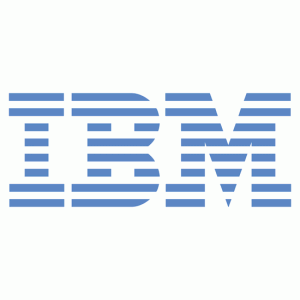Information technology giant International Business Machines Corp. (NYSE:IBM) is a Dow component and industry stalwart. International Business Machines Corp. (NYSE:IBM) has served its investors well for decades on end. In fact, had you invested $1,000 in International Business Machines Corp. (NYSE:IBM) stock on May 27, 1980, your investment would be worth more than $19,000 today, according to the company (assuming reinvested dividends). Amazingly, the stock would have provided a 1,879% total return over that time period.

Still executing after all these years
International Business Machines Corp. (NYSE:IBM) has a corporate track record that most companies would love to have. The company has provided investors superb revenue and earnings growth throughout its history, and the past few years have been no exception.
International Business Machines Corp. (NYSE:IBM) earned $15.25 per share in 2012 diluted operating earnings, marking a new record. The company has reported double digit diluted EPS growth for 10 years in a row.
In addition, it’s worth noting that the company’s dividend payments have been an important piece of its total return puzzle. 2012 marked the 97th consecutive year in which IBM has paid a dividend, and those quarterly checks have really added up for investors over the years.
More recently, IBM provided investors with a dividend increase in time for its May payout. IBM handed out a solid 12% dividend increase, and currently yields 1.85% at recent prices.
Not the only game in town
Of course, when it comes to large-cap technology stocks joining the dividend-paying rank and file, IBM certainly isn’t alone. Many technology companies, formerly known for high growth and little to nothing in terms of dividends, have changed their policies and now offer hefty yields.
Chip juggernaut Intel Corporation (NASDAQ:INTC) offers new investors a 3.75% annualized yield. If you’re wondering why Intel Corporation (NASDAQ:INTC)’s yield is so high, it’s mainly due to a combination of consistent dividend growth and a falling stock price.
Disappointing full-year operating results, in which fiscal 2012 earnings per share fell 11%, and the recurring, pervasive fear that the personal computer may soon be obsolete, have joined forces to send Intel Corporation (NASDAQ:INTC)’s stock down 15% from its post-financial crisis high.
There’s a similar story to tell for fellow tech mega-cap Microsoft Corporation (NASDAQ:MSFT). The software giant’s perceived tethering to the personal computer has kept investors from bidding up its stock price. Microsoft Corporation (NASDAQ:MSFT) has traded in a range for many years despite solid growth, and as a result, trades for 12.5 times its adjusted 2012 earnings per share. Like Intel Corporation (NASDAQ:INTC) and IBM, Microsoft Corporation (NASDAQ:MSFT) pays a solid dividend that yields 2.75% at recent prices.
Is now the time to buy?
If you were to draft a pros and cons list regarding IBM’s investing merits, you’d be able to come up with arguments on both sides.
Unfortunately for new investors, IBM’s success is well-reflected in the stock price. The stock yields only 1.8%, less than the yield on the broader market and many of its fellow tech stocks, and IBM trades for a higher valuation multiple than most of its technology peers. The aforementioned Intel Corporation (NASDAQ:INTC) and Microsoft Corporation (NASDAQ:MSFT) trade for 12 times trailing adjusted earnings, whereas IBM exchanges hands for a 14 trailing P/E.
While IBM has an undoubtedly rock-solid business and its investing merits solidly outweigh the negatives, I’d be lying if I said I considered the stock to be a compelling buy. IBM’s track record and historical performance speak for themselves, but at this point, the stock has rallied to a price level beyond what I would consider to be screaming-buy territory.
After reaching an all-time high of $215 per share, investors were presented with a buying opportunity after the stock fell below $190 in April. Since then, the stock has recovered to its current level of $206 per share. At $190 or lower, I’d be much more interested. At that level, IBM would yield 2%–on par with the yield on the S&P 500 Index—and would present an interesting buying opportunity.
As it stands, I’ll be content to watch IBM from the sidelines. Investors will very likely continue to enjoy double-digit dividend increases and steady profit growth for many years to come, and I will hope for a more opportune time to one day count myself among them.
The article What’s the Status of Big Blue? originally appeared on Fool.com.
Robert Ciura owns shares of Intel. The Motley Fool recommends Intel. The Motley Fool owns shares of Intel, International Business Machines., and Microsoft. Robert is a member of The Motley Fool Blog Network — entries represent the personal opinion of the blogger and are not formally edited.
Copyright © 1995 – 2013 The Motley Fool, LLC. All rights reserved. The Motley Fool has a disclosure policy.
